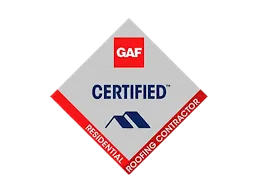Understanding Fiber Cement Siding Materials and Composition
Fiber cement siding represents one of the most innovative developments in exterior cladding technology, combining durability with aesthetic versatility for residential properties throughout Ambler, Lower Gwynedd, Radnor, Wayne, Huntingdon Valley, Blue Bell, Bala Cynwyd, and Dresher, PA. This engineered material consists of cement, sand, and cellulose fibers that create a composite product offering exceptional strength and weather resistance. At Reliance Roofing and Siding, we specialize in installing this premium siding option that has revolutionized how homeowners protect and beautify their homes.
The manufacturing process involves combining Portland cement with ground sand and cellulose fibers under high pressure, creating planks that maintain dimensional stability even in extreme weather conditions. This composition results in a material that resists rot, fire, and insect damage while providing excellent impact resistance compared to traditional wood or vinyl alternatives. The cellulose fibers, typically derived from recycled materials, add flexibility and prevent cracking, while the cement provides structural integrity and the sand contributes to the material’s density and weather resistance.
Installation Process and Technical Specifications
Installing fiber cement siding requires specialized expertise and equipment that our certified installers have mastered through extensive training and experience. The installation begins with a thorough inspection of the existing wall sheathing and the application of a weather-resistant barrier that prevents moisture infiltration. We ensure proper clearance from ground level, typically maintaining a minimum six-inch gap to prevent ground moisture from affecting the siding. Each plank must be carefully measured and cut using specialized diamond-tipped saw blades designed specifically for fiber cement materials, as standard wood-cutting tools will quickly dull when used on this dense material.
The fastening system plays a crucial role in long-term performance, requiring corrosion-resistant nails or screws placed at specific intervals to accommodate thermal expansion and contraction. We install starter strips at the foundation line and use specialized flashing around windows, doors, and other penetrations to create a watertight seal. The overlap between planks, typically ranging from one to one and a quarter inches, must be precise to ensure proper water shedding while maintaining the aesthetic appeal of the installation.
Performance Benefits and Long-Term Value
Fiber cement siding delivers exceptional return on investment through its remarkable longevity and minimal maintenance requirements. With proper installation, this siding can last fifty years or more, significantly outlasting vinyl or wood alternatives that typically require replacement every fifteen to twenty-five years. The material maintains its appearance without the fading, chalking, or warping common with other siding types, preserving your home’s curb appeal and value for decades.
Energy efficiency represents another significant advantage, as fiber cement siding provides better insulation properties than vinyl while allowing proper moisture vapor transmission that prevents trapped moisture problems. This breathability helps regulate interior humidity levels and reduces the risk of mold growth within wall cavities. Insurance companies often recognize the fire-resistant properties of fiber cement siding with reduced premiums, as the material achieves a Class A fire rating, the highest level of fire resistance available for residential siding products.
Design Versatility and Aesthetic Options
We offer an extensive range of fiber cement siding styles that replicate the appearance of traditional materials while providing superior performance. Available options include:
- Lap siding profiles that mimic classic wood clapboard with various exposure widths from four to twelve inches
- Vertical board and batten styles for contemporary or farmhouse architectural designs
- Shake and shingle patterns that provide texture and visual interest without the maintenance requirements of cedar
- Smooth or textured finishes that accommodate both modern and traditional aesthetic preferences
The color selection process offers virtually unlimited possibilities through factory-applied finishes or field painting options. Factory finishes utilize advanced coating technologies that bond at the molecular level, providing fifteen to twenty-five year warranties against peeling, chipping, or excessive fading. Field painting allows complete customization and future color changes, with the material accepting paint exceptionally well due to its porous surface structure.
Maintenance Requirements and Care Guidelines
While fiber cement siding requires minimal maintenance compared to wood or stucco alternatives, proper care ensures maximum longevity and appearance retention. Annual washing with a garden hose removes accumulated dirt and debris, while spot cleaning with mild detergent addresses any stubborn stains or mildew growth in shaded areas. We recommend inspecting caulk joints around windows and doors every two to three years, resealing as necessary to maintain the weather-resistant envelope.
Paint touch-ups may be needed after ten to fifteen years for factory-finished products, particularly on southern exposures that receive intense UV radiation. The repainting process involves thorough cleaning, light sanding if necessary, and application of high-quality acrylic latex paint designed for masonry surfaces. Unlike vinyl siding that cannot be painted once it begins fading, fiber cement siding accepts new paint readily, allowing complete color transformations when desired.
Regional Considerations and Climate Adaptability
In Serving Ambler, PA and surrounding areas, where seasonal temperature variations and moisture levels challenge exterior materials, fiber cement siding proves particularly advantageous. The material’s low thermal expansion coefficient minimizes stress on fasteners and joints during temperature fluctuations, preventing the buckling or warping issues common with vinyl siding in extreme heat or cold. Additionally, the freeze-thaw resistance of properly installed fiber cement siding prevents the cracking and deterioration that affects stucco and brick veneer in our climate.
Humidity resistance makes fiber cement siding ideal for homes near water bodies or in areas with high rainfall, as the material won’t absorb moisture like wood or develop mold issues common with improperly ventilated vinyl installations. Our installation techniques account for local weather patterns, ensuring proper drainage planes and ventilation gaps that maximize performance in regional conditions.
As a family-owned company maintaining our distinction as a GAF-Certified Roofing Installer, Reliance Roofing and Siding combines technical expertise with personalized service to deliver exceptional fiber cement siding installations. Our comprehensive approach includes coordinating with window, door, and gutter installations to create cohesive exterior renovations that enhance both protection and beauty. Contact us at (215) 866-6700 to discuss how fiber cement siding can transform your property while providing decades of worry-free performance and stunning curb appeal that increases your home’s value and your pride of ownership.



